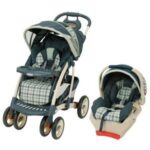Last week, my wife noticed a pile of torn-up tissues in the back seat of her car. She didn’t think much of it, and cleaned them up. This past weekend, though, the culprit made itself known. Upon opening the trunk of the car, she was greeted by a brand new furry brown tenant. A mouse has taken up residence in my wife’s car. This time of year, as the seasons change, mice become a big problem for rural folks. In an attempt to find safe harbor for the coming winter, field mice flock into our homes and – apparently – our cars. Dealing with these wily rodents at home is hard enough, but there are extra concerns when you have a mouse problem in your car. Here are some solid tips for dealing with furry invaders.
Getting a cat for your car, as you might at home probably won’t work out well at all. Let’s avoid becoming the old lady who swallowed the fly, and address the issue head-on. Mice in your car can be extremely worrisome. Beyond the “icky” factor, mice can chew holes in upholstery, leave droppings all over your vehicle, and most worrying, chew through essential wires and hoses. The result can be dangerous – electrical shorts and fuel leaks – and expensive. I’ve read accounts of folks spending over a thousand dollars because mice built a nest in a hard-to-reach part of an engine. Mice pose an additional danger to drivers, as they may choose to show themselves while you’re doing seventy on the highway. More than one accident has been caused this way. If there are mice in your car, you need to protect your vehicle and deal with Dangermouse immediately.
Protect your car. This should really be your first order of business. As much as you want Mickey out of your car, your immediate concern needs to be avoiding high repair bills. Smelly stuff is the order of the day. Both strong-smelling fabric softener sheets and mothballs are pretty effective as mouse deterrents. Place these items liberally throughout your trunk, cabin, and engine compartment. You’ll need to remember to take them back out of the engine compartment whenever you drive the vehicle. Some folks have had good luck using a metal pie plate full of moth-balls on top of the engine. The plate is easy to pull out and toss in the trunk when you go for a drive. This step alone may make the car a much-less appealing home for your new friend, and they may head off in search of a better place to hang out. Don’t count on it, though – once a mouse chooses a home, they hate to move out, so while your moth balls may discourage new guests, you’ll want to proceed with killing or catching your current residents.
Poison bait is typically a pretty workable way to do away with unwelcome pests, but a car is an enclosed space, and if Mighty Mouse crawls into a hidey-hole in your passenger cabin to die, you’ll be dealing with the smell of rotting rodent for months – not at all pleasant. When dealing with mice in a vehicle, traps are really the only way to go.
If you have a soft spot for the little buggers, there are a number of affordable live-catch traps on the market. The Home Depot or your local hardware store can likely point you in the right direction. Many mice are too smart for these traps, but if you’ve played your cards right up to this point you may be able to take a week or so and give it a shot. Simply bait the trap with raisins or peanut butter, set it, and place it in a spot where you’ve seen evidence of your mouse. Remember to check your live-trap daily, as starving the mouse to death is no more humane than just killing it in a trap.
If you’re a bit firmer in your convictions, and don’t mind killing the mouse, both traditional snap-style traps and glue traps are incredibly effective. Know that the snap traps often kill a mouse immediately, while glue traps tend to be relatively traumatic and painful for the mice, and you may need to do the dirty-work yourself. That said, they work really well, if you are of stout heart.
Once you’ve trapped your interloper, go ahead and reset your traps for another week or two. Many people catch their varmints just to see more damage in the following week. Don’t assume that your rodent is working alone. Once you feel confident that your car has been rendered mouse-free, continue to use your deterrents through the rest of the season, and seasonally every year – if one mouse liked your car, others may, too. These tips should help you to keep your car rodent free forever.



